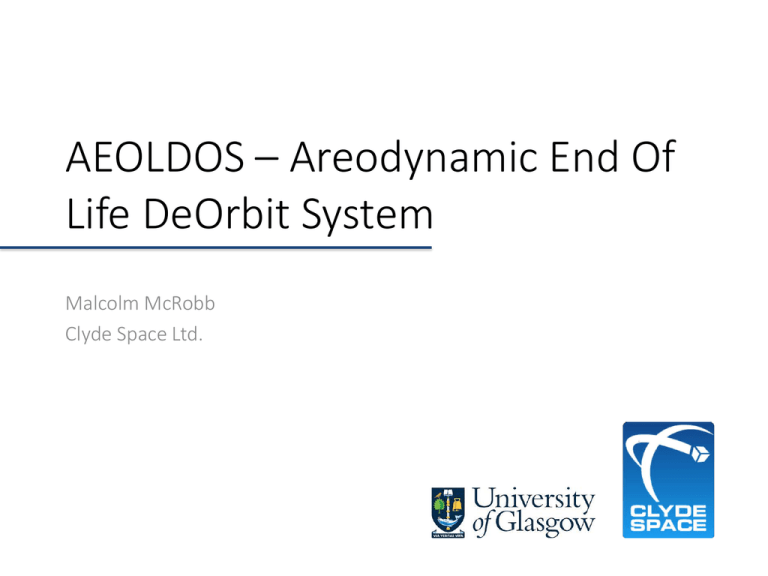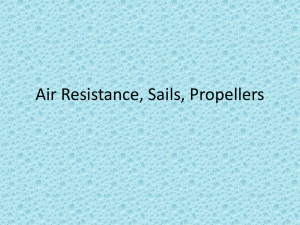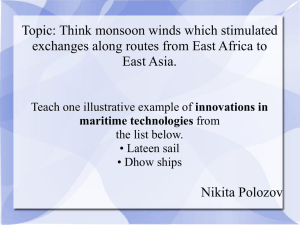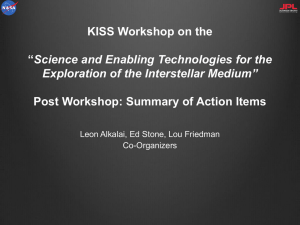3.2 McRobb
advertisement

AEOLDOS – Areodynamic End Of
Life DeOrbit System
Malcolm McRobb
Clyde Space Ltd.
Do we have a problem?
•
Access to LEO vital for many services:
• Crop monitoring
• Navigation
• Observation
• Disaster Response
• Etc…
•
1978 – Donald J. Kessler proposes a scenario whereby the
density of debris in LEO reaches a point such hat collisions
between objects cause a cascading effect.
•
Approx’ 13,000 objects bigger than a softball; 100,000
pieces bigger than a penny; tens of millions smaller still….
•
Hurtling around Earth at up to 18,000 mph.
Enter, the CubeSat era:
In fact, it is thought that CubeSats account for
<1% of orbital debris…
Who is responsible for the clear up?
WARNING, FUZZY GREY AREA!!!
….but in short, all parties launching spacecraft into LEO should have the moral obligation to
ensure that they responsibly, and safely dispose of their craft at the end of its operational
lifespan.
25 years is often thrown about as figure, but in reality this
is a long time for something to cause a collision……..
Inter-Agency Space Debris
Coordination Committee (IADC)
{
•
•
•
•
•
•
•
•
•
•
•
•
ASI (Agenzia Spaziale Italiana)
CNES (Centre National d'Etudes Spatiales)
CNSA (China National Space Administration)
CSA (Canadian Space Agency)
DLR (German Aerospace Center)
ESA (European Space Agency)
ISRO (Indian Space Research Organisation)
JAXA (Japan Aerospace Exploration Agency)
NASA (National Aeronautics and Space Administration)
ROSCOSMOS (Russian Federal Space Agency)
SSAU (State Space Agency of Ukraine)
UK Space Agency
What are the solutions?
Capture vs. Mitigation
AEOLDOS
AERODYNAMIC END OF LIFE DEORBIT SYSTEM
•
Passively deployed drag sail
–
–
•
•
•
•
•
•
Residual atmospheric particles generate drag
forces to reduce host spacecraft velocity.
Double the projected area, halve the time to
deorbit.
Compatible to most commercially available
CubeSat structures.
Modular; can be either end stack or mid-stack
mounted.
Autonomous deployment achievable.
0.4U – up to 3m2 radially symmetrical sail.
Integrated button cell for deployment activation
(no power requirement from host).
Low-cost; in-keeping with the CubeSat ethos.
{
0.4U
Stored Strain – simple and elegant
• Spooled tape-springs are a popular deployment mechanism.
–
–
–
–
–
Uni-stable structure due to its C-shaped cross section.
Stores strain energy when wound into a spool.
Only requires electrical energy to initiate release.
Multiple booms can be wrapped around a single spool.
Low-cost prototyping using COTS.
Other devices using tape-springs often deploy their booms
tangentially…this can lead to a number of problems.
Radial Vs. Tangential Deployment
Square Hub
Petal Hub
Radial Vs. Tangential Deployment
Square Hub
Petal Hub
Petal Hub
Sail Casting Doors and the Innards
Sail casting doors
in stowed
position
Sail stowage area
Cage bearings force
the booms to deploy
radially
Once the spool is
released, the booms
extend and the
doors are cast
outwards
Petal Hub ensures
safe and robust
deployment
Symmetrically Folded Sail
Fitted cartridge
Optimised folded
sail
Empty sail cartridge
Symmetrically Folded Sail
Real-time footage
High-speed camera footage
3D AEOLDOS – New Opportunities?
Novel Bevel Crux Drive (BCD) that enables the
symmetrical deployment of a 3D sail.
Utilises the already demonstrated tape-spring
approach in combination with radially spaced bevel
gears that communicate generated torques evenly
throughout the assembly.
Research focussing on using the BCD to effectively
raise and lower the orbits of host spacecraft.
Thank you for listening…
please feel free to ask me questions at
the end of the session…
….or contact me at
Malcolm.McRobb@clyde-space.com











